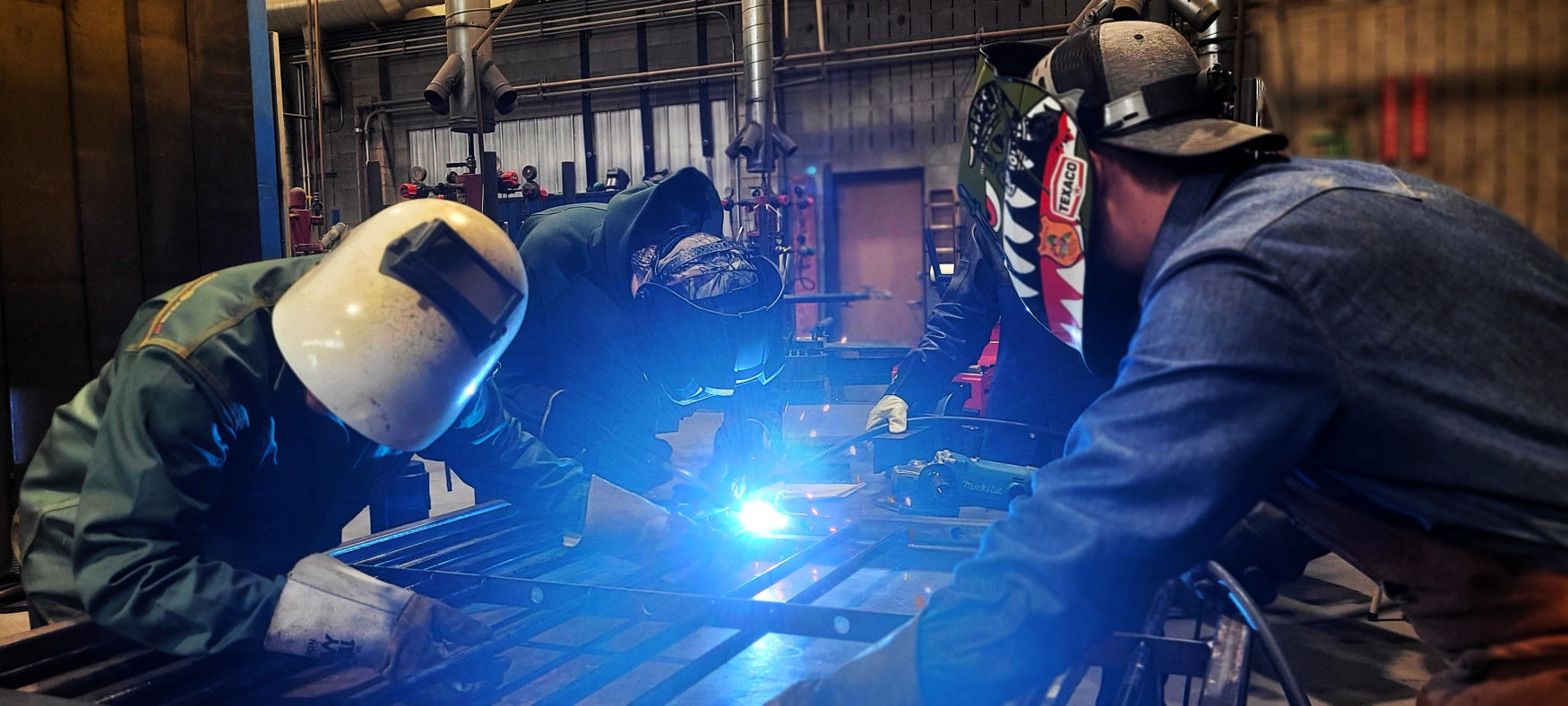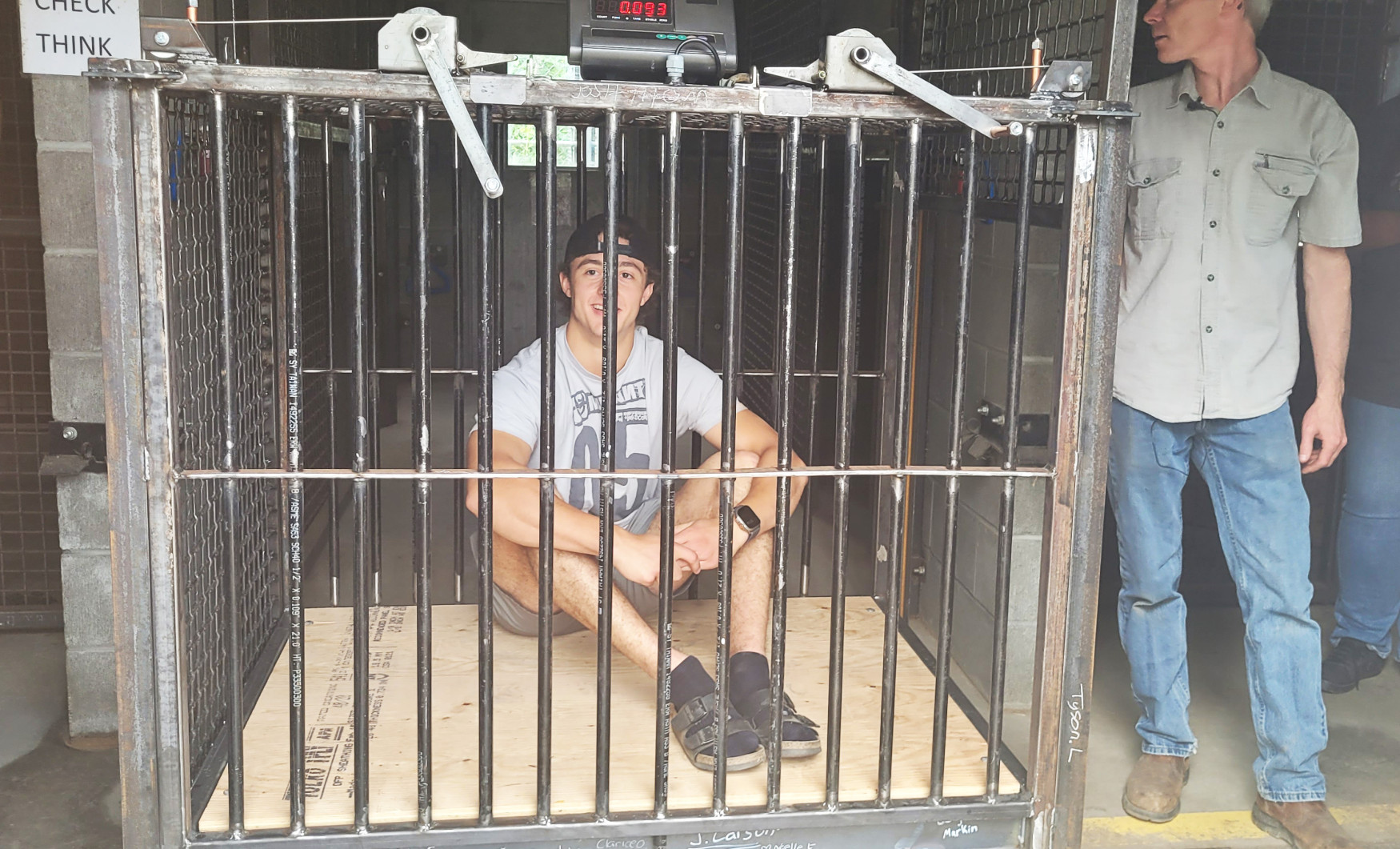In the middle of the Kamloops summer heat, 15 welding students sweated it out to build a bear cage using the skills they honed during their five months in Peter Robertson’s welding foundation class.
Yes, you read that right. A bear cage. This wasn’t a typical welding project, but then again, neither was the request. This was a challenge the class not only accepted but was excited to work on.

Welding students put together parts of a cage they created for the BC Wildlife Park to use for weighing bears.
The BC Wildlife Park needed a cage that would fit any of its bears (grizzly, kermode/spirit or black) housed at the not-for-profit centre. It needed a built-in weigh scale and an opening in the back so the bears could poke out a leg for voluntary blood draws.
“We had a dream in mind to be able to do voluntary blood draws on our bears for years and years, as it is so invaluable for monitoring their health, as well as weigh the bears, as that is not something we were able to do because of the size of the bears and also because of how destructive bears can be (we can’t just leave a scale in the enclosure),” said Tracy Reynolds, animal care manager with the BC Wildlife Park.
“We saw this design online as something they have used at the Washington State University, where they have a bear research facility, and we borrowed it from them. I spoke to them about it, then spoke with TRU — we couldn’t have otherwise done it without the help of the TRU students.”

TRU welding student Clarice Osorio shows off a piece of the bear cage her class built as a project this summer.
Student Colton Argue has personal reasons for wanting to work on the cage.
“Honestly, I was so excited. When I was a kid, I used to love the wildlife park so much, and I love bears, so it goes hand in hand. They (the BC Wildlife Park) do so much for the community, so it’s really nice to do something just to help out, “ he said.
Argue plans to use his welding education to work on industrial projects in northern Canada and is excited about the wildlife he will see there.
The project would not have been possible without welding instructor Peter Robertson agreeing to integrate it into the class. A professional welder for over 25 years and TRU instructor for two years, Robertson has a wealth of experience in the field. But even he had not had a request like this before.
“Absolutely not. It’s usually piping systems — oil and gas — or structural steel. This is definitely a unique project,” he said.
The unusualness of this project spurred him on.
“I feel that one of the most rewarding things as a tradesperson is seeing the work you do doing its job as it exists in the rest of the world. I love incorporating projects into the course. These types of projects really reinforce what we’re learning, and they get people involved in applying their craft to their community,” he said.

If it can handle a student, it can handle a bear. Welding student Jaxon Bruno tests the bear cage with a built-in scale his class created for the BC Wildlife Park.
The cage exceeded Reynolds’s expectations.
“It looks to me to be perfect and they thought of many of the little details that make things work perfectly. They’ve exceeded my expectations, especially with the scale, which is something I am very pleased about,” she said.
The cage project was funded through $19,000 from iHub (Cewil Canada) and means the wildlife park’s animal-care staff will now be able to answer the question: how much does a bear weigh?
The class got to see their cage in its new habitat after they presented it to the wildlife park on Aug. 9. They also toured the bear platforms, so they could see their satisfied customers. Unfortunately, Clover the spirit bear was indifferent to the students and the cage, but the wildlife park staff were grateful. Bear-y grateful, as they now have a tool that is worth its weight in gold, steel — or some might even say — bear.

